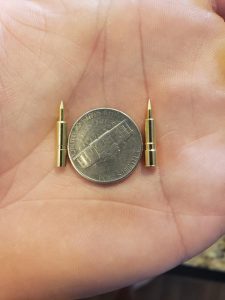Oil companies have long known how to “use the whole animal” they butcher.
And now, they plan to use that strategy to continue raking in profits even with the electrification of vehicles worldwide.
The phrase “whole-animal” refers to butchers using and selling every part of a butchered animal: pig feet, chicken spines, bull testes… You get the picture.
Well, oil companies have done this with their own product for years.
Only 20 gallons out of a 45-gallon barrel of refined oil ends up as gasoline we put in our cars.
Another 11 gallons end up as heating oil. Four gallons become kerosene or jet fuel. Two gallons end up as special hydrocarbon gas liquids. Then there’s petroleum coke, asphalt, lubricants, etc.
The point is, oil companies know how to dice up their products and make money from every drop.
But now, with the boom in electric vehicles, they’ve been searching for solutions outside of those barrels.
President Biden’s energy plan during his campaign called for the installation of 500,000 new public EV charging stations in the U.S. by 2030.
Even before that, prior to President Trump’s withdrawal from the Paris Agreement, the U.S. was expected to hit 330,000 by 2025.
No matter how accurate those numbers are at the end of the day, or how quickly those charging stations go up, it’s clear that there will be a lot of them coming online.
And you may or may not be surprised that a great many of them will be built by the very industry they hope to replace.
The likes of Shell and BP are in a bidding war to buy up the companies that manufacture those stations. They are also competing already for the real estate to put all of these new stations.
Rolling up to a BP charging station in another two or three years might start to feel just the same as hitting a BP gas station on your way to work.
There’s obviously a benefit for these companies in this. They can charge drivers no matter what car they own. But there’s a much bigger benefit that hasn’t yet been fully exploited.

Grab a piece of paper and pen to write this down…
Because you’re about to see the name and ticker symbol of the ONLY 5G STOCK every investor should own.
You can get the name and ticker of this company right here, no strings attached. But you better act fast…
Because the Federal Communications Commission, the government agency in charge of 5G, just scheduled a major announcement that would send shares soaring once announced.
Don't miss out. Click Here to Get #1 5G play for 2020 before the next market close.
And as noted above, these kinds of companies know how to use the whole animal.
Carbon offsets or credits are a byproduct of a cap-and-trade system. All across Europe and in places like California, this can be a big business.
The idea is straightforward enough. To cut down on carbon emissions, governments will limit, or “cap,” how much pollution a certain type of facility or business is allowed to produce each year. If they produce more than their allotment, they must buy more carbon credits or face enormous penalties.
Those credits are sold by the governments themselves. But only a certain number are available each year.
Others, such as tree farms, can also produce these credits. Since they are net negative carbon emitters, they get free credits they can trade to polluters.
This kind of system has been in place in Europe since 2005 and California since 2013. There are many problems with it, including a lack of oversight and a penchant for fraud.
But there have been some reforms of late to cut down on these problems. Including one to cut down on the high speculation that’s been driving the price tag of secondary-market carbon credits.
Well, one of the quickest ways for this fraud and the other problems to be sorted out is to open up the credit-selling side to big oil.
I mean it. To get regulators to go out and actually award credits, it’ll take some big industry to force their hand.
And that’s exactly what’s going on.
A few years ago, a coalition of early charging station owners got together to push for their share of the carbon credits. California has been slow on this, as they see these credits as already given through the tax incentives to build the stations in the first place. Europe is more friendly to these charging stations.
With a more nationwide adoption of charging technology and Big Oil heavily investing in these stations, federal law is more likely to model its own credit policy on Europe.
And that means that the very industry that needs to buy credits will have found a way to get their own free credits or offsets without spending a fortune.
For now, the carbon credit market is still new, despite more than a decade of trial and error. But a full build-out of infrastructure here in the U.S. will quickly mature this potential revenue source for Big Oil.
It may seem over-complicated and a big waste of effort. But for federal energy policy, that’s pretty par for the course.
At the end of the day, this massive build out of EV infrastructure could let companies like BP and Shell either pocket an additional stream of revenue or offset the costs of their more profitable drilling businesses.
This is one area that could quietly become a huge multibillion-dollar side gig for the right companies. I’ll continue to watch this space as the bid for charging stations continues.
To your prosperity and health,
Joshua M. Belanger